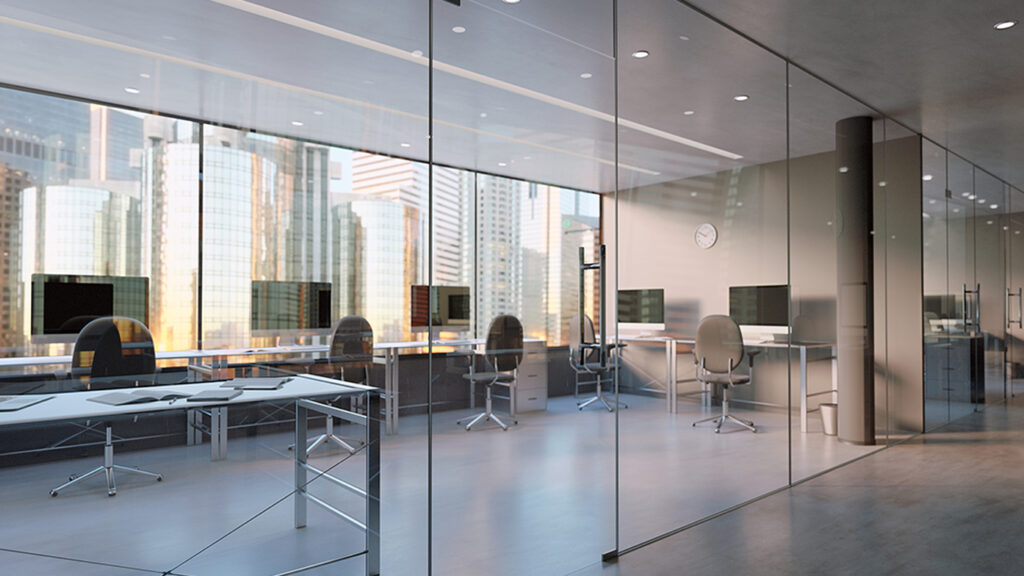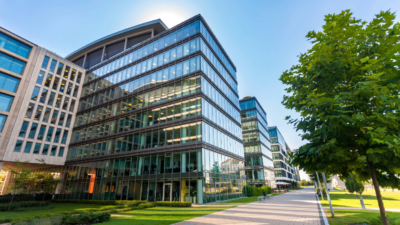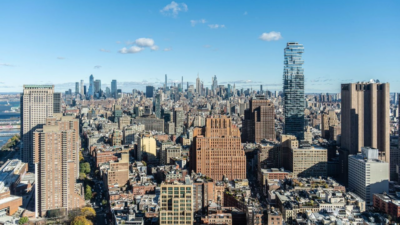The U.S. office market cooled in Q3 2022. Vacancy ticked up, while sublease space hit a new record high. Is a market correction on the horizon? It will likely take another 18 to 24 months for economic and business concerns to play out. Concurrently, occupiers are reviewing their working practices and office needs.
The U.S. office vacancy rate stands at 15.4%, an increase of 30 basis points in the third quarter. However, vacancy is still below the prior peak of 16.3%, seen at the height of the Global Financial Crisis.
Net absorption, which measures the change in occupied office inventory, was positive in just over half (52%) of the office markets tracked in our national survey. National office absorption totaled 507,200 square feet. Absorption has been modestly positive in four of the past five quarters starting in Q3 2021, totaling a cumulative 15.3 million square feet. This marks a significant turnaround from the prior five quarters, starting in Q2 2020, when cumulative net absorption was negative 153.1 million square feet.
“There is a record 232.8 million square feet of sublease space available across the U.S. office market, up from 215.9 million square feet in Q2 2022, and significantly higher than the prior cycle’s peak of 143.3 million square feet seen in Q2 2009.”
Four metro office markets posted more than 500,000 square feet of positive absorption in Q3 2022, led by New York City (5.5 million square feet), Dallas (1.3 million square feet) and South Florida (704,000 square feet). Atlanta, Detroit, Pittsburgh and Charlotte also saw healthy gains. San Francisco took the hardest hit, with 1.4 million square feet of negative absorption in the third quarter. Philadelphia and Seattle also posted over one million square feet of negative absorption.
There is a record 232.8 million square feet of sublease space available across the U.S. office market, up from 215.9 million square feet in Q2 2022, and significantly higher than the prior cycle’s peak of 143.3 million square feet seen in Q2 2009. As firms continue to evaluate their post-COVID real estate needs, sublease space will remain a cost competitive, short-term option until there is greater clarity on business direction.
Construction activity continues to slow. Currently, 103.9 million square feet are underway, which is down 37% from this cycle’s peak of 164 million square feet in Q3 2020. The New York metro area has by far the largest amount of ongoing construction, at 17.5 million square feet, followed by the San Francisco Bay Area with 10.3 million square feet and Seattle with 7.3 million square feet.
Asking rates are, by and large, still holding firm. However, the gap between asking and effective rents remains significant due to generous concessions on offer. Tenant improvement allowances of $100 per square foot or more, plus 12 to 18 months of rent abatement, are available in several major markets when a tenant signs a new 10-year lease on Class A space.
There is considerable debate and speculation regarding the future of the U.S. office sector. Employees are gradually returning to the office. Occupancy levels stand at 47.3%, up from 44.1% at the end of the second quarter. Most tenants look set to adopt hybrid working with a minimum of three days in the office per week emerging as the common standard
It will take time for firms to recast their property strategies and decide how much space will be needed going forward and where it should be located. Evidence of tenant downsizing is occurring. Uncertainty in the economy continues to cloud the picture, further impacting the timing of such decisions. Existing lease commitments will also restrict the ability to implement change. Structural shifts in the U.S. office sector are afoot, but they will take some time to play out.

 U.S. National Research
U.S. National Research

 Marc Shandler
Marc Shandler Josh Cramer
Josh Cramer
 Jesse Tollison
Jesse Tollison
 Katie Watts
Katie Watts